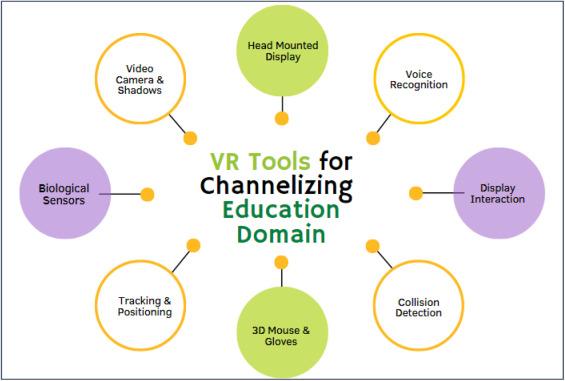How VR Transforms Student Engagement and Boosts Retention: The Future of Learning Explained
The way we learn is undergoing a revolution. Virtual Reality (VR) is no longer just for gaming—it’s rapidly reshaping the education landscape by making learning more immersive, interactive, and memorable. Educators and institutions around the world are embracing this innovative technology to boost student engagement, foster deeper learning, and dramatically increase retention rates. But how does VR in education truly work, and what makes it such a powerful tool for future-ready classrooms? In this article, we’ll unveil the science, benefits, case studies, and practical tips that explain how VR transforms student engagement and boosts retention—setting the stage for the future of learning.
What Is VR in Education?
Virtual Reality (VR) is a computer-generated simulation of a three-dimensional surroundings that you can interact with in a seemingly real or physical way through special equipment like headsets and motion controllers.In education, VR creates digital learning environments where students can:
- Explore ancient sites, scientific concepts, or even the human body in 3D
- Participate in virtual labs and safe simulations
- Engage in collaboration with classmates within shared virtual worlds
By immersing students directly in the content, VR takes learning beyond textbooks, transforming complex concepts into interactive experiences.
The Key Benefits: How VR Enhances Student engagement & Retention
Integrating VR into the classroom delivers numerous advantages.Below are the core ways that VR impacts student engagement and boosts content retention:
1. Immersive and Active Learning
- Hands-On Activities: VR lets students “learn by doing”—experiencing concepts through action rather than passive reading or listening.
- Real-World Context: Simulations place learners in real-life scenarios, making knowledge more practical and memorable.
2.Increased Motivation and Curiosity
- Novelty effect: VR’s wow factor captures attention and ignites excitement about learning new topics.
- exploration & Experimentation: Students can interact with content and make discoveries at thier own pace, fostering curiosity.
3. Enhanced Retention and Recall
- Multi-Sensory Experiences: combining visuals, sound, and physical movement significantly increases memory retention compared to conventional methods.
- Active Participation: students remember more when they’re actively involved in learning rather than passive observers.
4. personalized and Inclusive Learning
- Customizable Content: VR adapts to different learning styles, strengths, and paces—making education more accessible to all students.
- Safe Space for Collaboration: shy or anxious learners can practice skills and contribute in a low-risk digital environment.
“Students retain 75% of what they do in VR compared to just 10% of what they read.”
— Stanford Graduate School of Education
The Science Behind VR, Engagement & Retention
But why does VR work so well for learning? Research shows that active engagement is strongly linked to better knowledge retention and skill mastery. Virtual reality taps into several proven psychological and neurological principles:
- Experiential Learning Cycle: VR lets students experience,reflect,conceptualize,and experiment—solidifying understanding at each stage.
- Deeper Cognitive Processing: Immersive experiences stimulate more regions of the brain,creating stronger neural connections.
- Reduction of Cognitive Load: Visualizing complex information in 3D can simplify abstract concepts and reduce confusion.
- Immediate Feedback: Students get instant responses and can retry scenarios, reinforcing learning through practice.
VR in the Classroom: Inspiring Case Studies
1. Medical Training at Case Western Reserve University
Through the HoloAnatomy VR app, students interact with detailed 3D human anatomy, leading to higher practical assessment scores and improved surgical skill retention.
2. Virtual Field trips at Google Expeditions
Over 1 million students have used VR to ‘visit’ the Grate Wall of China,the International Space Station,and ancient Rome. Participants reported increased excitement and understanding of global history and geography concepts.
3. STEM engagement at Franklin High School
After incorporating VR science labs, Franklin High saw a 30% improvement in test scores and a measurable increase in class participation and attendance.
4. Soft Skills Training at PwC
PwC’s global VR pilot for soft skills (leadership and public speaking) demonstrated that students could learn skills up to 4x faster, with higher confidence compared to customary online courses.
First-Hand Teacher & Student Experiences
Mrs. Thompson, High School Biology Teacher:
“When students use VR to explore the inside of a cell, their questions and ‘aha!’ moments skyrocket. It’s like flipping a switch—students who struggled with textbook diagrams are suddenly leading our group discussions.”
Leo, College Freshman:
“Practicing lab safety in VR before stepping into a real lab made me way less nervous and helped me remember every step. I wish all my courses had this!”
The Future of Learning: Why VR is Here to Stay
As VR technology becomes more affordable and content libraries grow, experts predict that immersive learning will become a core element of education from K-12 to universities and beyond. Artificial intelligence (AI) integration and cloud-based VR platforms will further personalize learning, adapt to individual needs, and enable remote access—making engaging, retention-boosting VR experiences available to all.
- Broader accessibility, even for remote and under-resourced regions
- Expanded curriculum coverage (arts, humanities, technical trades)
- Ongoing assessment and analytics to track engagement and learning progress
As schools worldwide look to future-proof their teaching methods, embracing VR in education will be essential for cultivating curiosity, preparing students for real-world challenges, and unlocking human potential.

